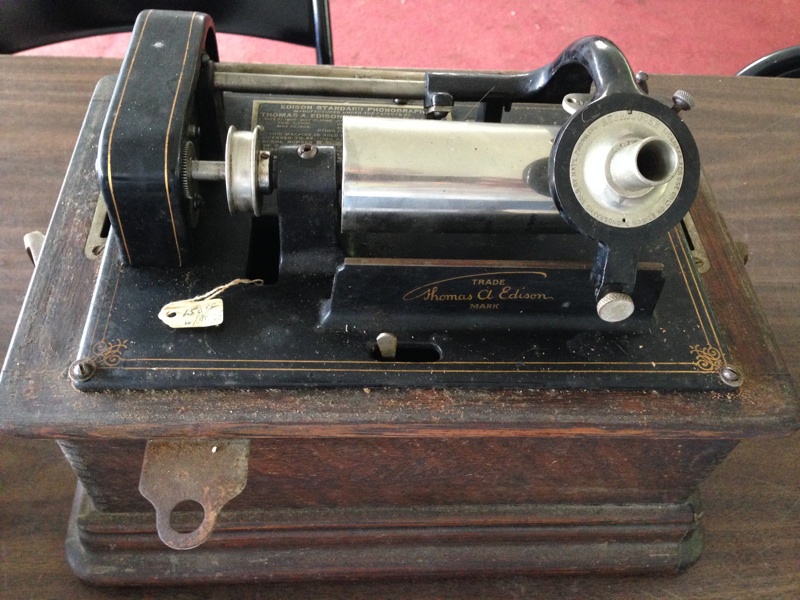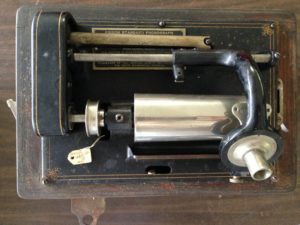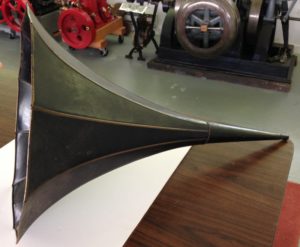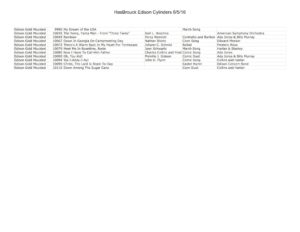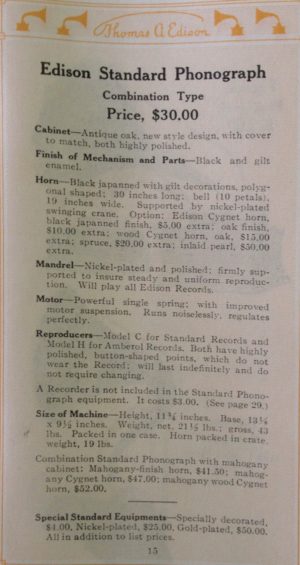The Edison Standard Phonograph Combination Type (Type D) was produced between October 1908 and November 1911. It used a spring-driven motor to rotate a hard wax recording cylinder. A mechanical “reproducer” with a sapphire stylus and small metal diaphragm converted the grooves on the cylinder into sound, and the sound was amplified by a 30-inch long horn made of 10 “petals” of thin metal.
The original gift includes 58 commercial recording cylinders: 25 Edison Gold Moulded (2 minute) and 33 Edison Amberol (4 minute) cylinders.
